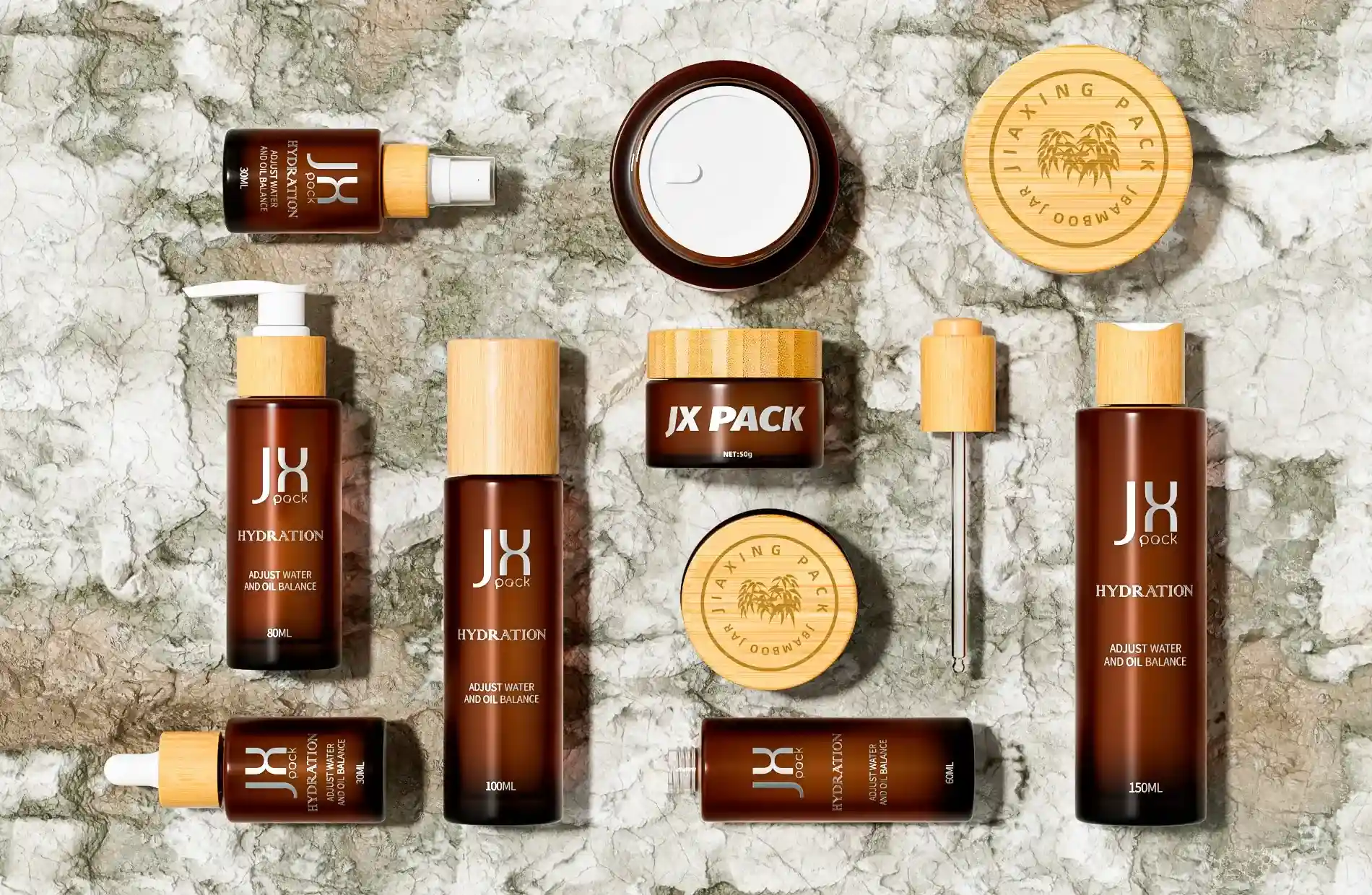In recent years, the beauty industry has undergone a significant transformation, with sustainability emerging as a crucial focus. As consumers become increasingly aware of the environmental impact of their purchasing decisions, the demand for eco-friendly skincare products has skyrocketed. This shift has placed a spotlight on one of the most pressing issues in the beauty sector: Packaging. The future of eco-friendly beauty lies in innovative, sustainable packaging solutions that not only protect and preserve skincare products but also minimize environmental harm.
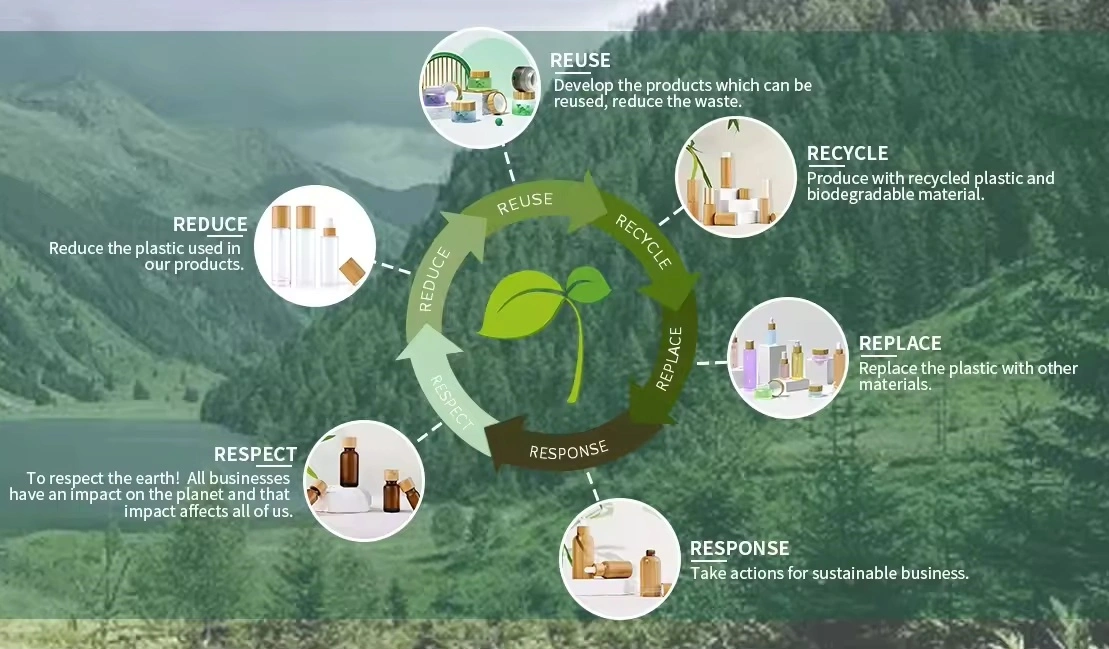
1. The Current State of Skincare Packaging
Traditional skincare packaging has long relied on materials that, while effective for product preservation and marketing, have significant environmental drawbacks. Plastic, the most commonly used material, is derived from non-renewable resources and can take hundreds of years to decompose. The beauty industry produces over 120 billion units of packaging annually, with the majority being plastic that ends up in landfills or oceans.
Glass, while recyclable, is energy-intensive to produce and transport. Many skincare products also use mixed materials in their packaging, combining plastic, metal, and glass, which complicates recycling processes. For instance, pumps often contain multiple materials, making them difficult to recycle in standard facilities.
The environmental impact of conventional packaging is substantial. Plastic waste, in particular, has become a global crisis, with millions of tons ending up in landfills and oceans each year. This not only pollutes ecosystems but also poses serious threats to wildlife. Marine life is especially vulnerable, with an estimated 8 million metric tons of plastic entering our oceans annually.
Moreover, the production of these materials contributes significantly to greenhouse gas emissions, exacerbating climate change. The cosmetics industry’s carbon footprint is substantial, with packaging accounting for a significant portion of its environmental impact.
Consumer awareness of these issues has grown exponentially. A recent survey found that 73% of global consumers are willing to change their consumption habits to reduce their environmental impact. This shift in consumer mindset has put pressure on beauty brands to innovate and adopt more sustainable packaging solutions.
2. Sustainable Materials in Skincare Packaging
In response to environmental concerns and consumer demand, the beauty industry is exploring a wide range of sustainable materials for packaging:
Post-Consumer Recycled (PCR) Plastics
PCR plastics are made from recycled plastic materials that have been used by consumers. By using PCR plastics, brands can reduce the demand for virgin plastic production and give new life to existing plastic waste. Many major skincare brands have committed to increasing the percentage of PCR plastic in their packaging, with some aiming for 100% PCR plastic use in the near future.
The benefits of PCR plastics are significant:
– Reduced reliance on fossil fuels for new plastic production
– Lower carbon emissions compared to virgin plastic manufacturing
– Diversion of plastic waste from landfills and oceans
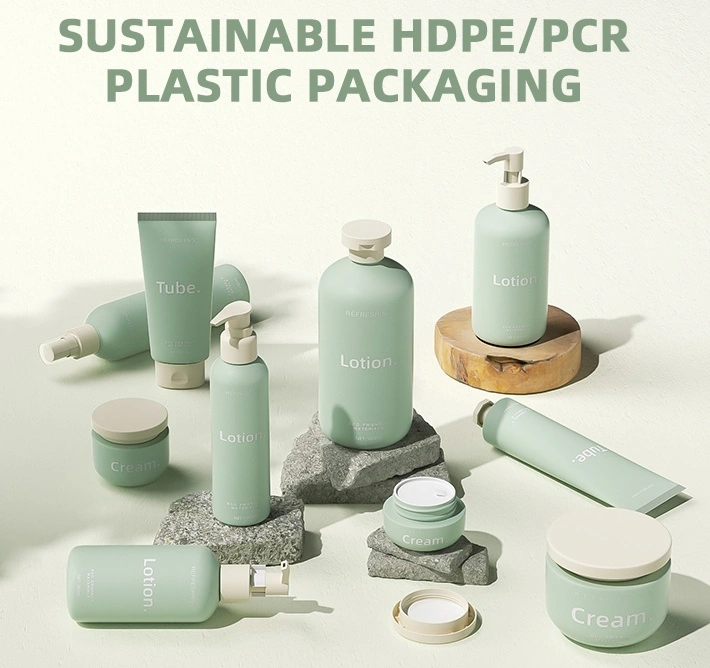
Bioplastics and Biodegradable Materials
Bioplastics, derived from renewable biomass sources such as vegetable fats and oils, corn starch, or woodchips, offer a promising alternative to traditional petroleum-based plastics. These materials can biodegrade under specific conditions, reducing long-term environmental impact.
Types of bioplastics include:
– Polylactic Acid (PLA): Made from fermented plant starch
– Polyhydroxyalkanoates (PHA): Produced by microorganisms
– Cellulose-based plastics: Derived from wood or cotton
While bioplastics offer potential environmental benefits, it’s important to note that not all bioplastics are created equal, and their environmental benefits can vary depending on production methods and disposal conditions. Some require industrial composting facilities, which are not widely available in many regions.
Glass and Aluminum
While not new materials, glass and aluminum are seeing a resurgence in popularity due to their recyclability and reusability. These materials can be recycled indefinitely without loss of quality, making them excellent choices for sustainable packaging. Some brands are opting for lightweight glass options to reduce transportation emissions.
Benefits of glass and aluminum:
– Infinitely recyclable without quality loss
– Inert materials that don’t interact with product formulations
– Perceived as premium by consumers
However, these materials are heavier than plastic alternatives, potentially increasing transportation-related emissions. Brands are working on innovative designs to minimize this drawback, such as using thinner glass or creating refillable systems.
Paper and Cardboard Alternatives
Paper-based packaging, when sourced from sustainably managed forests or recycled materials, can offer a low-impact alternative for certain types of skincare products. Innovations in water-resistant and oil-resistant papers are expanding the potential applications of these materials in the beauty industry.
Advancements in paper packaging include:
– Molded fiber packaging: Created from recycled paper pulp
– Stone paper: Made from calcium carbonate and non-toxic resin
– Seaweed paper: Biodegradable and even edible in some cases
These alternatives often have a lower carbon footprint than plastic and are more easily recyclable or compostable.
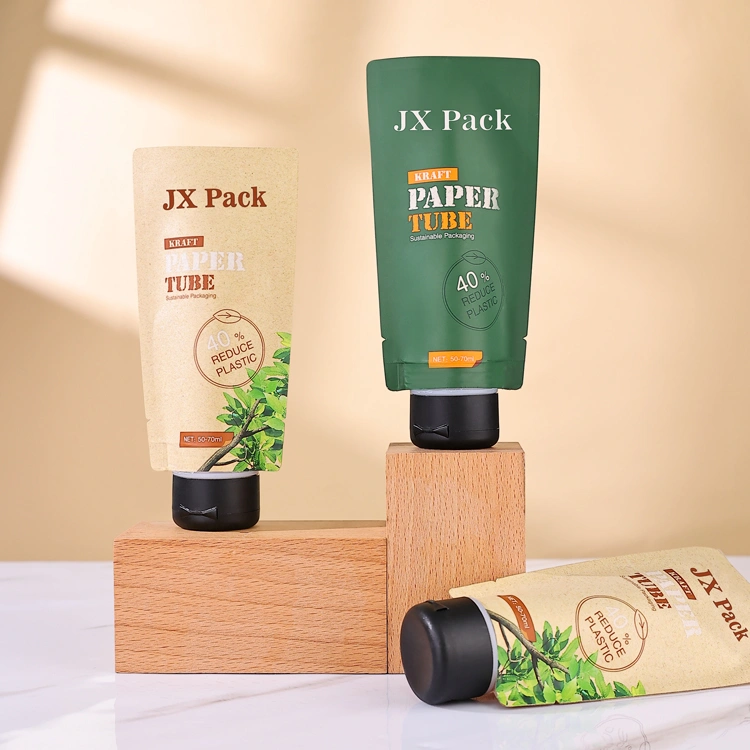
Innovative Materials
The quest for sustainable packaging has led to some truly innovative solutions:
– Seaweed-based packaging: Not only biodegradable but can also be eaten or dissolved in water
– Mushroom-based packaging: Made from mycelium (the root structure of mushrooms), offers a compostable alternative
– Sugarcane-derived polyethylene: A renewable alternative to traditional petroleum-based polyethylene
– Bamboo: Rapidly renewable and biodegradable
These materials represent the cutting edge of sustainable packaging innovation, offering biodegradability and renewability. However, many are still in early stages of development and face challenges in scaling up production to meet industry demands.
3. Design Innovations for Eco-Friendly Packaging
Sustainability in skincare packaging isn’t just about materials; it’s also about innovative design approaches that reduce waste and extend product life:
Minimalist Packaging Designs
Many brands are embracing minimalist packaging designs that use less material overall. This approach not only reduces waste but also aligns with contemporary aesthetic preferences for clean, simple designs.
Benefits of minimalist packaging:
– Reduced material usage
– Lower transportation emissions due to lighter weight
– Simplified recycling process
Brands are rethinking every aspect of their packaging, from removing unnecessary outer boxes to streamlining bottle and jar designs.
Refillable and Reusable Containers
Refillable packaging systems are gaining traction in the beauty industry. These systems allow consumers to purchase product refills in minimal packaging and reuse their original, often more luxurious containers. This approach significantly reduces packaging waste while maintaining the premium feel that many skincare consumers desire.
Examples of refillable systems:
– Durable outer packaging with replaceable inner cartridges
– In-store refill stations where consumers can refill their own containers
– Mail-back programs for refilling and recycling
Challenges include ensuring the durability of reusable containers and educating consumers on proper cleaning and maintenance.
Airless Pump Bottles
Airless pump bottles represent a significant innovation in skincare packaging. These containers use a vacuum system to dispense product, protecting the contents from air and contaminants. This technology extends product shelf life, reduces the need for preservatives, and allows for nearly complete product usage, minimizing waste.
Benefits of airless pump bottles:
– Extended product shelf life
– Reduced need for preservatives in formulations
– Minimized product waste
– Better protection against contamination
While these bottles offer numerous benefits, they often contain multiple materials, which can complicate recycling. Brands are working on developing mono-material airless pumps to address this issue.
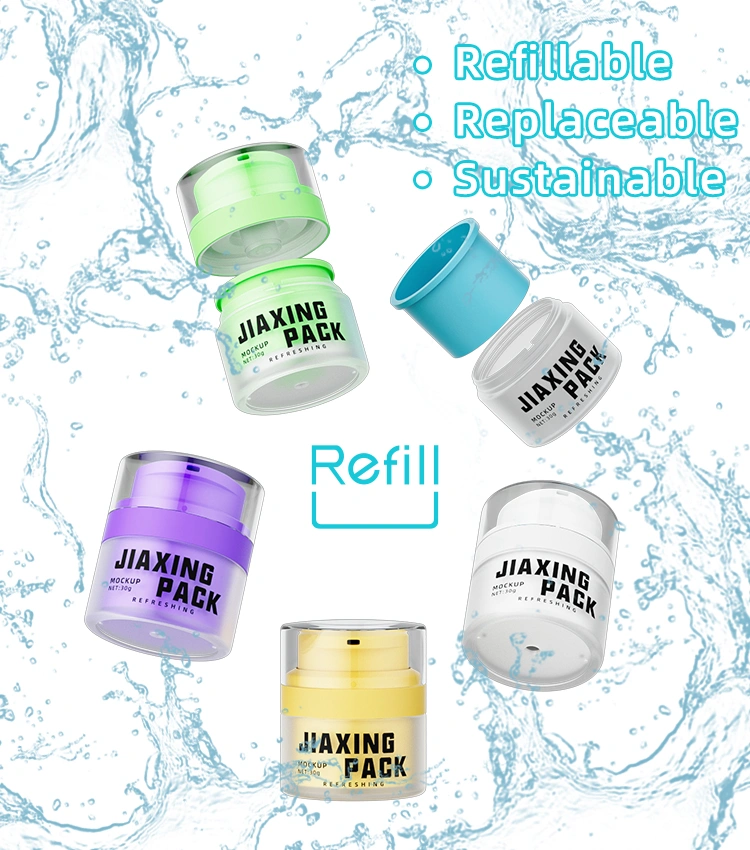
Waterless Product Formulations
The development of waterless or solid skincare products is revolutionizing both formulations and packaging. These concentrated products require less packaging and are often sold in bar form or as powders, significantly reducing plastic usage and transportation emissions due to their lighter weight.
Types of waterless products:
– Cleansing bars
– Moisturizer sticks
– Powdered face masks
– Concentrated serums
These products not only reduce packaging waste but also conserve water, a critical resource in many regions.
4. Technological Advancements in Sustainable Packaging
Technology is playing a crucial role in advancing sustainable packaging solutions:
Smart Packaging
Smart packaging technologies, such as QR codes and Near Field Communication (NFC), allow brands to provide product information, usage instructions, and recycling guidance without the need for printed materials. This not only reduces paper waste but also enhances the consumer experience and product traceability.
Applications of smart packaging:
– Digital product information and usage instructions
– Authentication and anti-counterfeiting measures
– Tracking product lifecycle and facilitating proper recycling
– Personalized skincare recommendations based on usage patterns
These technologies can significantly reduce the need for printed materials, labels, and inserts, further minimizing packaging waste.
Augmented Reality (AR) for Virtual Try-Ons
AR technology enables virtual try-ons for makeup and skincare products, potentially reducing product waste from in-store testers and allowing consumers to make more informed purchasing decisions without the need for sample products.
Benefits of AR in reducing packaging waste:
– Decreased need for physical samples and testers
– Reduced returns due to better-informed purchasing decisions
– Enhanced online shopping experience, potentially reducing trips to physical stores
As AR technology improves, it could significantly impact how consumers interact with and purchase skincare products, potentially reducing overall product and packaging waste.
3D Printing in Packaging Production
3D printing technology is being explored for creating customized, on-demand packaging. This could potentially reduce overproduction and waste in packaging manufacturing.
Potential applications of 3D printing in packaging:
– Customized packaging shapes and sizes to minimize material use
– Rapid prototyping of new packaging designs
– On-demand production to reduce inventory waste
– Creation of complex, mono-material designs that are easier to recycle
While still in its early stages for large-scale packaging production, 3D printing holds promise for creating more sustainable and efficient packaging solutions.
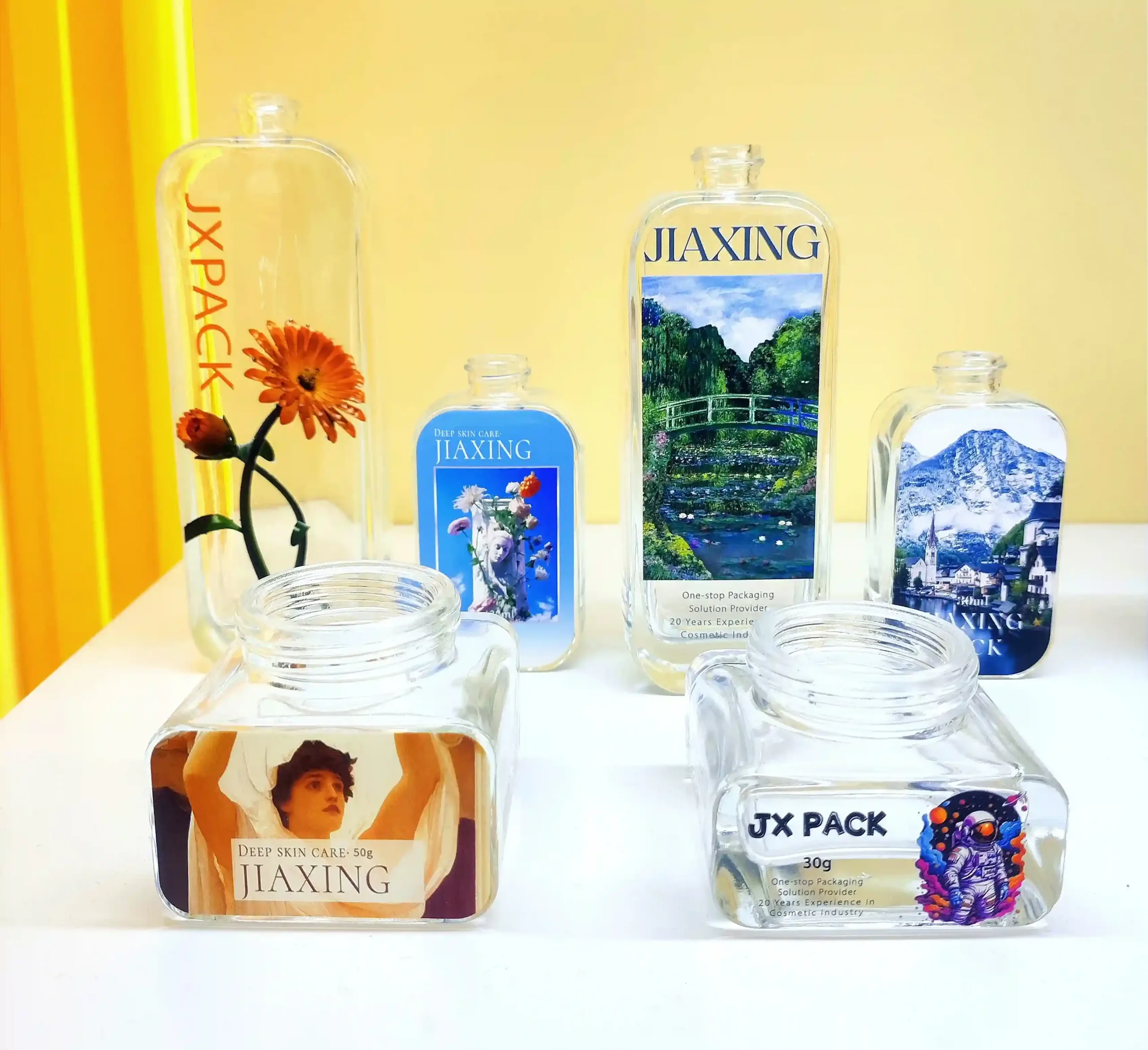
Nanotechnology in Packaging Materials
Nanotechnology is being used to develop packaging materials with enhanced properties, such as improved barrier functions and antimicrobial capabilities. These advancements could lead to packaging that better preserves products with less material.
Applications of nanotechnology in sustainable packaging:
– Improved barrier properties to extend product shelf life
– Antimicrobial coatings to reduce preservative needs
– Stronger, lighter materials that use fewer resources
– Enhanced biodegradability of certain materials
While promising, the use of nanotechnology in packaging also raises questions about safety and environmental impact that need to be carefully studied.
5. Industry Initiatives and Collaborations
Sustainability Pledges
Many major beauty brands have made public commitments to improve the sustainability of their packaging. These pledges often include targets for increasing recycled content, reducing virgin plastic use, and ensuring recyclability of packaging.
Examples of industry pledges:
– L’Oréal’s commitment to make 100% of its plastic packaging refillable, reusable, recyclable, or compostable by 2025
– Unilever’s promise to halve its use of virgin plastic and help collect and process more plastic packaging than it sells by 2025
– Estée Lauder Companies’ goal to make 75-100% of its packaging recyclable, refillable, reusable, recycled, or recoverable by 2025
These pledges are driving significant investment and innovation in sustainable packaging across the industry.
Partnerships and Collaborations
Beauty companies are forming partnerships with environmental organizations, recycling companies, and material scientists to develop and implement more sustainable packaging solutions. These collaborations are driving innovation and helping to scale up sustainable practices across the industry.
Examples of industry partnerships:
– The New Plastics Economy Global Commitment, led by the Ellen MacArthur Foundation in collaboration with UN Environment
– Partnerships between beauty brands and recycling companies to improve collection and processing of beauty packaging
– Collaborations with academic institutions to research new sustainable materials
These partnerships are crucial for addressing the complex challenges of sustainable packaging and driving systemic change.
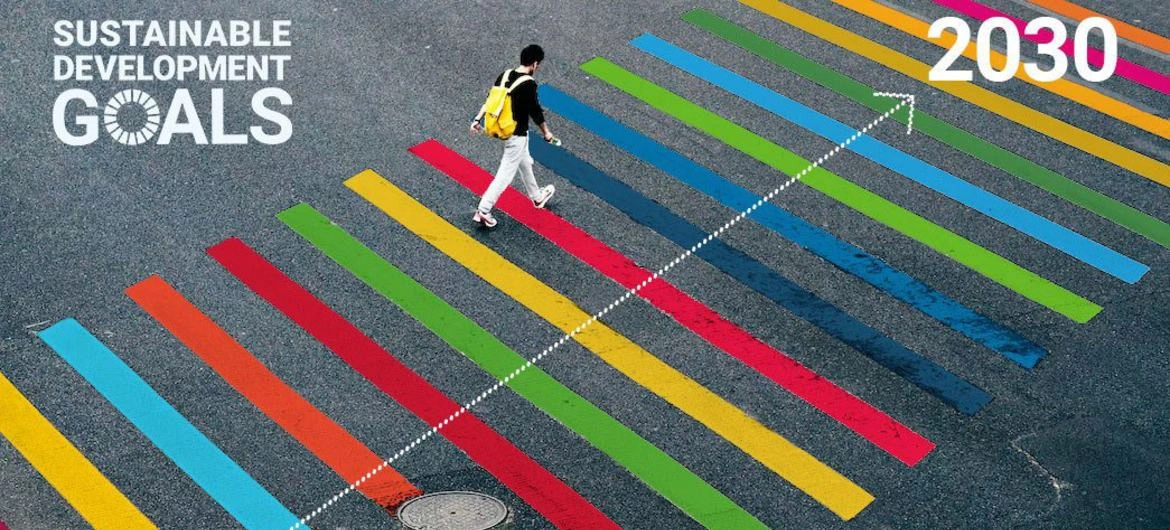
Industry-Wide Initiatives
Initiatives like the Sustainable Packaging Initiative for Cosmetics (SPICE) bring together beauty companies, packaging suppliers, and sustainability experts to develop shared methodologies for measuring and improving the environmental impact of cosmetic packaging.
Other industry initiatives include:
– The Sustainable Packaging Coalition, which provides resources and tools for companies to improve their packaging sustainability
– The Plastic Pact, a network of initiatives that brings together key stakeholders to implement solutions towards a circular economy for plastics
– Zero Waste Week, an annual awareness campaign encouraging the public and businesses to reduce waste
These initiatives foster collaboration, share best practices, and drive collective progress towards more sustainable packaging solutions.
Government Regulations
Governments worldwide are implementing regulations to reduce packaging waste and promote recycling. These regulations are pushing the beauty industry to adopt more sustainable practices and invest in eco-friendly packaging solutions.
Examples of regulatory measures:
– The European Union’s Circular Economy Action Plan, which includes measures to make all packaging reusable or recyclable by 2030
– Extended Producer Responsibility (EPR) schemes, which make manufacturers responsible for the entire lifecycle of their products, including disposal and recycling
– Bans or taxes on single-use plastics in various countries and regions
These regulations are creating a more level playing field for sustainable packaging innovations and driving industry-wide change.
6. The Role of Consumers in Driving Change
Consumers play a crucial role in driving the shift towards sustainable packaging:
Increased Awareness and Demand
Consumer demand for sustainable products and packaging is a primary driver of change in the beauty industry. As awareness of environmental issues grows, consumers are increasingly choosing products with eco-friendly packaging.
Key consumer trends:
– Growing preference for brands with strong sustainability credentials
– Willingness to pay a premium for eco-friendly products
– Increased scrutiny of brand claims and greenwashing
This consumer pressure is pushing brands to innovate and prioritize sustainability in their packaging decisions.
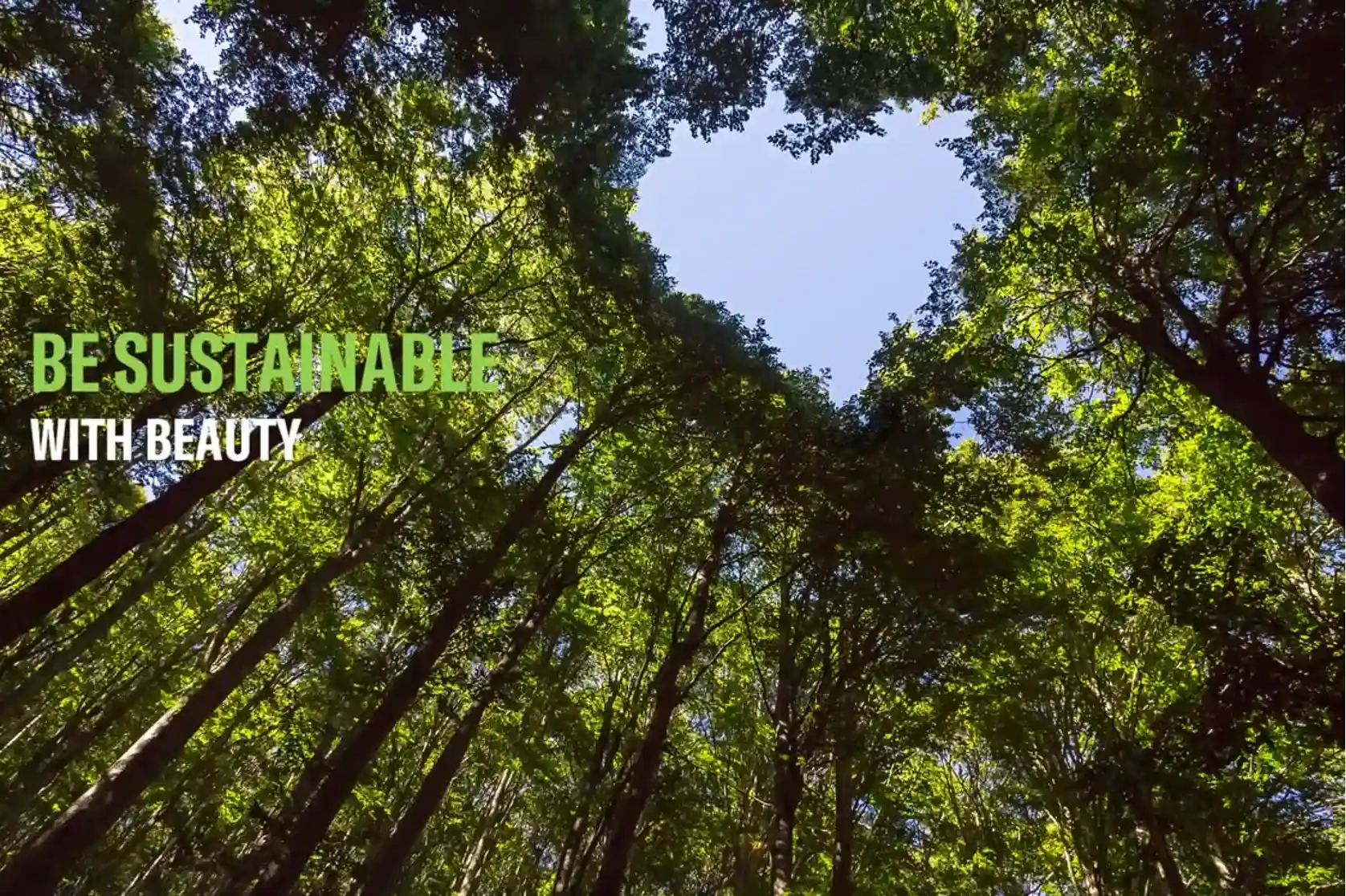
Consumer Education
Brands are investing in educating consumers about proper recycling and disposal of beauty packaging. This education is crucial for ensuring that sustainable packaging efforts have their intended impact.
Educational initiatives include:
– Clear recycling instructions on packaging
– In-store recycling programs and information
– Social media campaigns and influencer partnerships to spread awareness
– Partnerships with schools and community organizations for broader education
Empowering consumers with knowledge is essential for the success of sustainable packaging initiatives.
Social Media Influence
Social media platforms have become powerful tools for spreading awareness about sustainability issues and showcasing eco-friendly beauty products. Influencers and beauty enthusiasts are increasingly highlighting sustainable packaging in their content.
Impact of social media:
– Rapid dissemination of information about sustainable packaging innovations
– Creation of online communities focused on sustainable beauty
– Increased visibility for brands prioritizing eco-friendly packaging
– Consumer-led campaigns pressuring brands to improve their sustainability practices
The viral nature of social media has accelerated the conversation around sustainable packaging and amplified consumer voices.
Balancing Luxury and Sustainability
For many consumers, especially in the luxury skincare market, there’s a desire for packaging that feels premium while also being sustainable. Brands are working to strike this balance, developing eco-friendly packaging that maintains a luxurious aesthetic.
Strategies for balancing luxury and sustainability:
– Use of high-quality, sustainable materials like glass and aluminum
– Innovative designs that minimize material use while maintaining a premium look
– Focus on the tactile experience of packaging, using textures and finishes that feel luxurious
– Emphasizing the exclusivity and craftsmanship of sustainable, limited-edition packaging
This balance is crucial for ensuring that sustainability doesn’t come at the cost of the luxury experience many consumers seek in high-end skincare products.
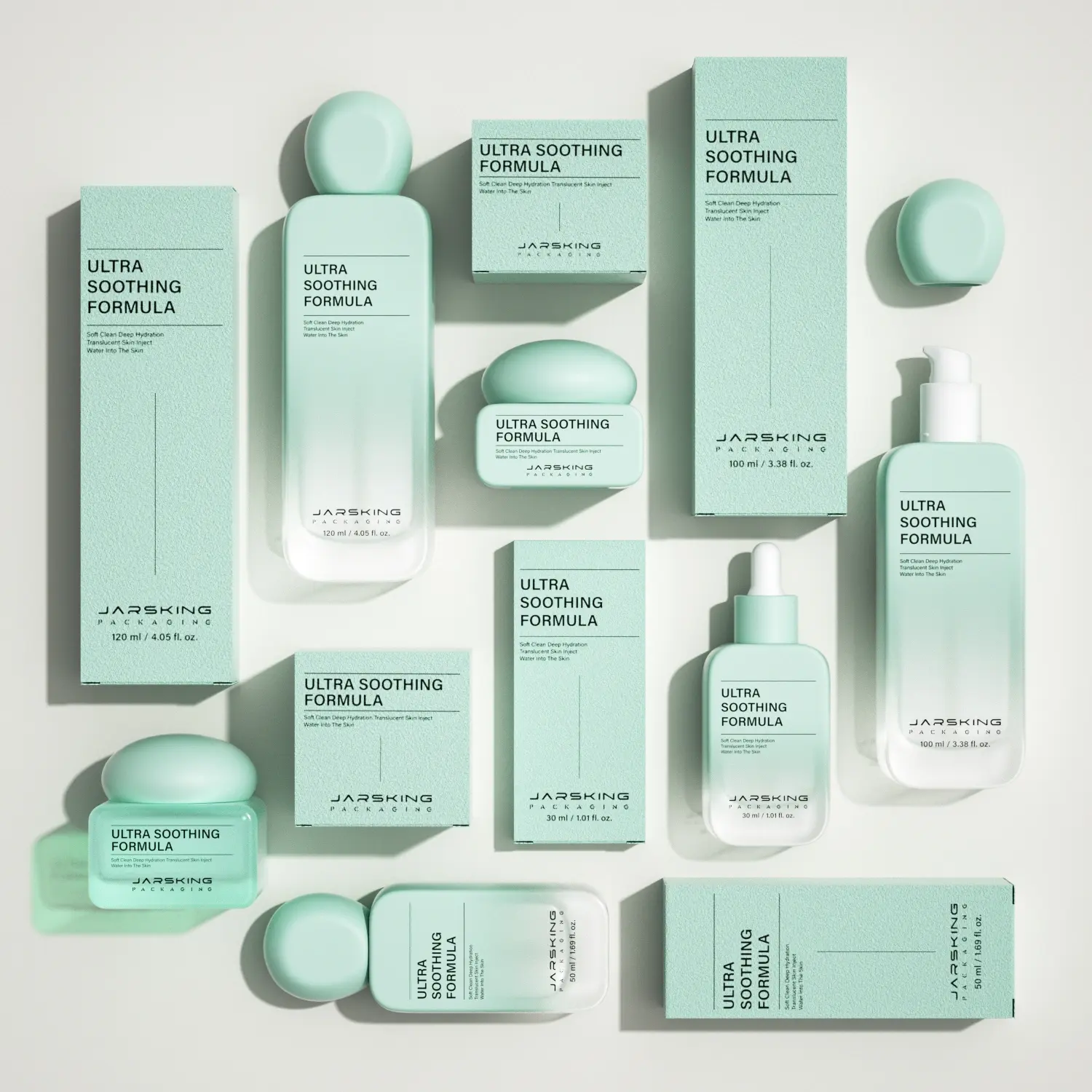
7. Challenges in Implementing Sustainable Packaging
Despite the progress being made, there are several challenges in implementing sustainable packaging solutions:
Cost Considerations
Sustainable materials and innovative packaging designs often come with higher costs, which can be a barrier for both brands and consumers. As technologies improve and scale, these costs are expected to decrease.
Factors contributing to higher costs:
– Research and development of new materials and designs
– Initial investment in new manufacturing processes
– Limited availability of certain sustainable materials
– Potential need for reformulation of products to suit new packaging
Brands are exploring various strategies to manage these costs, including gradual implementation of sustainable packaging and passing some costs to consumers who are willing to pay for eco-friendly options.
Maintaining Product Efficacy and Safety
Ensuring that sustainable packaging maintains product integrity and safety is crucial. This is particularly challenging for natural and organic products that may be more sensitive to environmental factors.
Key considerations:
– Barrier properties to protect against light, air, and moisture
– Compatibility with product formulations
– Stability and shelf life of products in new packaging materials
– Compliance with regulatory standards for safety and hygiene
Extensive testing and quality control measures are necessary to ensure that sustainable packaging solutions meet these critical requirements.
Scaling Up Production
As demand for sustainable packaging grows, there’s a need to scale up production of eco-friendly materials and designs. This requires significant investment in research, development, and manufacturing infrastructure.
Challenges in scaling up:
– Limited availability of certain sustainable materials
– Need for new manufacturing processes and equipment
– Ensuring consistent quality across larger production
8. Conclusion
The future of eco-friendly beauty is driven by a shift towards sustainable skincare packaging, fueled by environmental awareness and consumer demand. This transformation features innovative materials like recycled plastics and biodegradable options, alongside design innovations such as minimalist and refillable packaging. Technological advancements, including smart packaging and 3D printing, are further revolutionizing the industry. Despite challenges, the beauty industry is progressing through collaborations, sustainability pledges, and adapting to new regulations. As the industry evolves, we anticipate continued innovation in materials and designs, focusing on circular economy models and integrating sustainability into luxury packaging. Consumer engagement remains crucial in driving this change. This shift represents a reimagining of beauty product lifecycles, paving the way for a more sustainable and conscious beauty industry.
9. Final Note
In the rapidly evolving landscape of sustainable beauty packaging, Othilapak – Jarsking Group has emerged as a pioneering force, addressing the industry’s pressing environmental challenges head-on. With a network of advanced factories across China, Othilapak has positioned itself at the forefront of eco-friendly packaging solutions for the cosmetics industry. The company’s commitment to sustainability is evident in its innovative approach to materials and design, offering a wide range of environmentally conscious options including bottles, jars, caps, and pumps made from recycled and biodegradable materials. Othilapak’s state-of-the-art manufacturing capabilities allow for the efficient production of sustainable packaging at scale, enabling beauty brands of all sizes to transition towards more eco-friendly practices without compromising on quality or aesthetics.
Recognizing the diverse needs of the beauty industry in its journey towards sustainability, Othilapak provides comprehensive one-stop packaging solutions that cater to brands ranging from global giants to niche startups. The company’s team of experienced designers works closely with clients to develop packaging that not only meets sustainability goals but also aligns with brand identity and consumer expectations. Othilapak’s flexible approach allows for the production of both large-scale orders and smaller quantities, making sustainable packaging accessible to emerging brands and limited edition product lines. By offering services such as eco-friendly material consultation, sustainable design expertise, and efficient prototyping, Othilapak empowers beauty brands to navigate the complexities of sustainable packaging. This holistic approach not only solves immediate packaging challenges but also contributes to the broader industry shift towards a more environmentally responsible future in beauty packaging.
